|
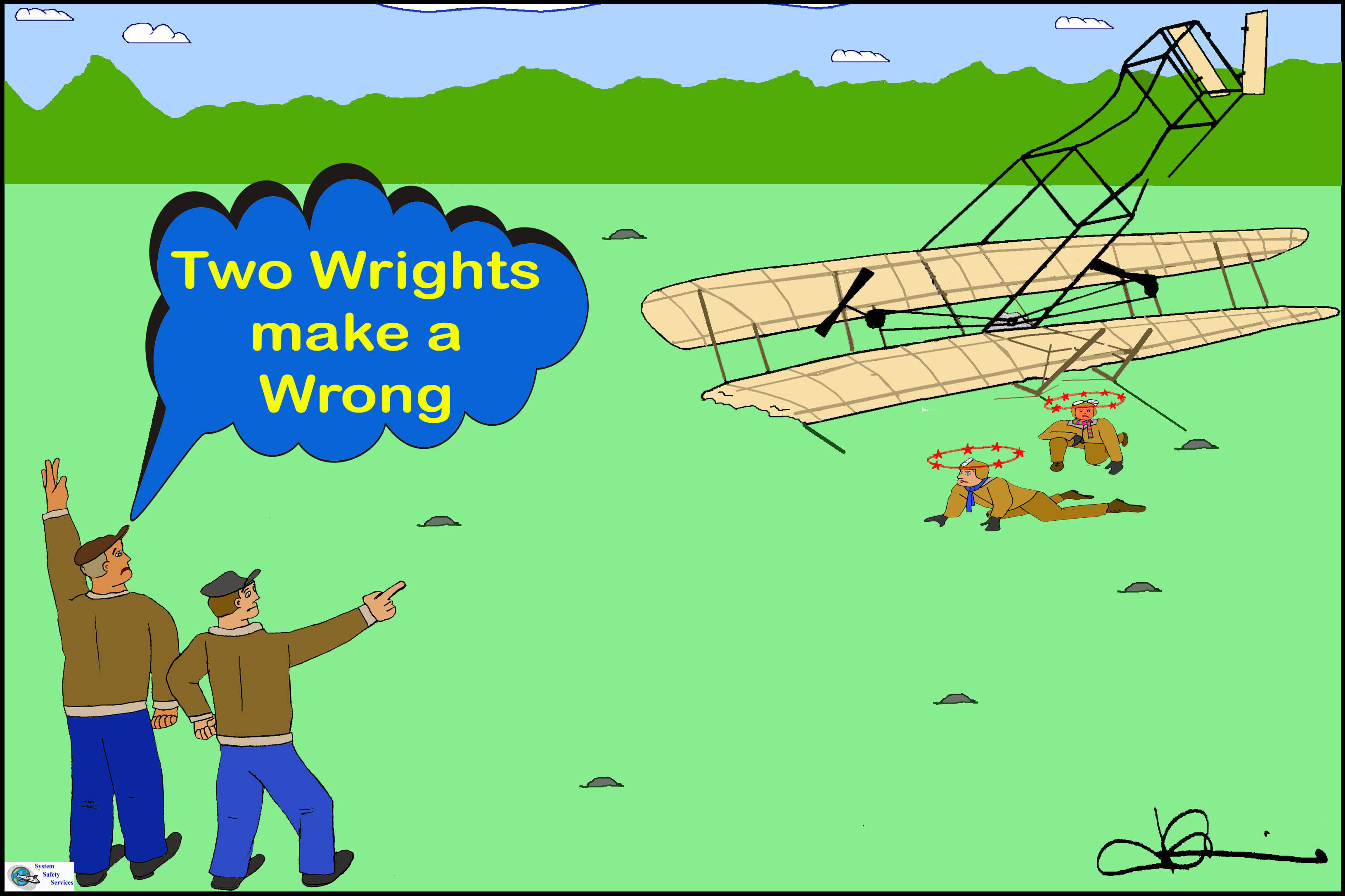
This one day workshop was designed by aviation
personnel for single pilot operations but can be attended by any aviation
personnel. It is highly interactive and helps answer why a conscientious person
can end up causing an accident.
Participants will learn what
they can do to avoid making the error that no one ever intends to make. The
workshop is designed to be entertaining as well as informative and covers the
following chapters:
A set of
"Flight Crew Dirty
Dozen" posters with the appropriate "Safety Net" reminders
have
been developed to help maintain the awareness that the workshops will
provide. See examples at bottom of this page.
1) Workshop Objective,
Outline and MP (Mentally
Prepared)
This is often called the motivator or reason to stay awake.
2) How Can We Be Mentally
Prepared?
A very simple model is
used to help explain why we humans make the decisions we do and what are
some of the things we can do to ensure that we are mentally prepared when
something goes wrong.
3) Decision Making or the
Lack of
This is better known as
loss of situation awareness. Strategies are developed to lessen the chances
of this occurring. .
4) What Influences our
Decision Making?
This chapter covers the
many things that can influence our decision making both physiological
(hypoxia) and psychological (complacency) Organizational (the company
culture) is covered in Part 2
5) Decision Making and
Risk Management
This chapter explains how
the benefit or perceived benefit causes us to takes risks. It goes on to
show how to manage risk.
6) Case Studies
There are two case studies
in the workshop. In these case studies they learn how to identify the chain
of events and develop "Safety Nets" to avoid making the errors.
7) Wrap up
The workshops all
end with the participants setting safety goals from what they have
learned
A certificate of
training is issued to the participants
As with all our
workshops we offer this guarantee:
"If at the end of the
workshop, any persons feels that it was a waste of his/her time, we will
refund the fee minus only expenses."
Crew Decision Making - Part 1
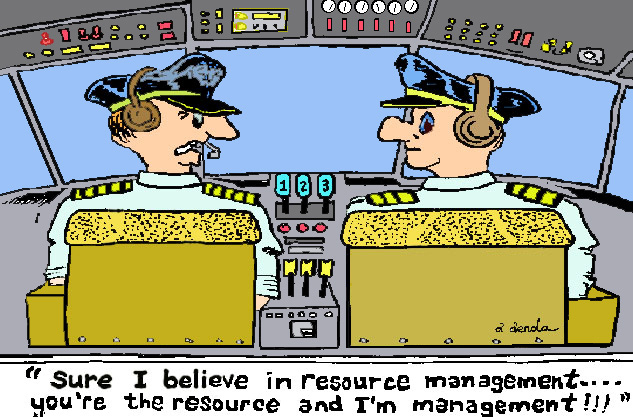
This two-day workshop is part
1 of a 3 part series and was designed by aviation personnel for multicrew flight
operations but can be attended by any aviation personnel. It is highly
interactive and helps answer why a conscientious person can end up causing an
accident.
Participants will learn what
they can do to avoid making the error that no one ever intends to make. The
workshop is designed to be entertaining as well as informative and covers the
following chapters:
A set of "Dirty
Dozen" posters with the appropriate "Safety Net" reminders have
been developed to help maintain the awareness that the workshops will
provide. See bottom of this info.
1) Introduction, Course
Objective and Expectations
This is often called the
motivator or reason to stay awake
2) Decision Making –
What makes us make the decisions we do?
A very simple model is
used to help explain why we humans make the decisions we do and what are
some of the things we can do to lessen making the incorrect decision
3) Behavioral Analysis
This Chapter uses
aviation flight crew related questions to enable each participant to look
at his/her own characteristics. Assertiveness or the lack of, is covered
in this Chapter
4) What Influences our
Decision Making?
This chapter covers the
many things that can influence our decision making both physiological
(fatigue) and psychological (complacency) Organizational (the company
culture) is covered in Part 2
5) Lack of Decision
Making
This is better known as
loss of situation awareness. Strategies are developed to lessen the
chances of this occurring
6) Stress
This one of the big four
in the Dirty Dozen is covered in detail with solutions developed to reduce
and control it’s negative effects
7) Fatigue
Another of the big four
that is given the most time in order to help reduce errors from it’s
effects
8) Communication or the
lack of
This Chapter covers the
importance of communication and how to communicate effectively
9) Teamwork
or the lack of
Note: Part of Teamwork
is covered with a survival exercise and the participants are made to
realize that the complete company is the team and not just their fellow
workers
10) Case Studies
There are three case
studies mixed throughout the workshop. In these case studies they learn
how to identify the chain of events and develop "Safety Nets" to
avoid making the errors
11) Wrap up
The workshops all end
with the participants setting safety goals from what they have learned
A certificate of
training is issued to the participants
Some Comments From Past Courses
Q I
thought I knew it all but you caused me to look at myself and how I react from a
different light..
Q Never
had so much fun learning some thing I already know.
Q Never
thought I’d give any workshop a 10 but this one is worth it. Thanks
Q Great
workshop. I now have a tool I can use to lower my risk of making an error.
As with all our workshops
we offer this guarantee:
"If at the end of the workshop,
any persons feels that it was a waste of his/her time, we will refund the fee
minus only expenses." (No
free donuts)
This set of "Flight Crew Dirty Dozen"
was developed to help maintain the awareness of the workshop
participants.
Like previous Dirty Dozen developed by
System Safety Services, each one illustrates one of the Dirty Dozen and
the Safety nets that assist the reader to avoid making that error.
Click on the thumbnail to
enlarge each image
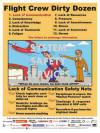 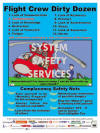 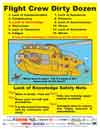 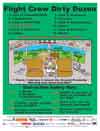 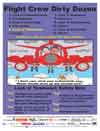 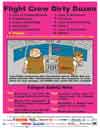
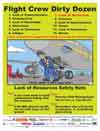 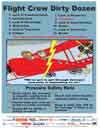 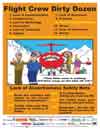 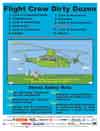 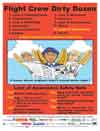 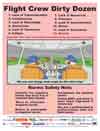
We Thank the Sponsors for their
Support.
Order Form
| 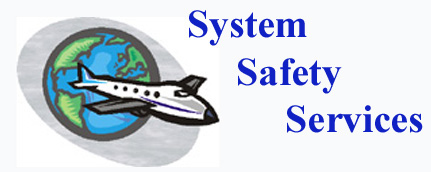
![]()